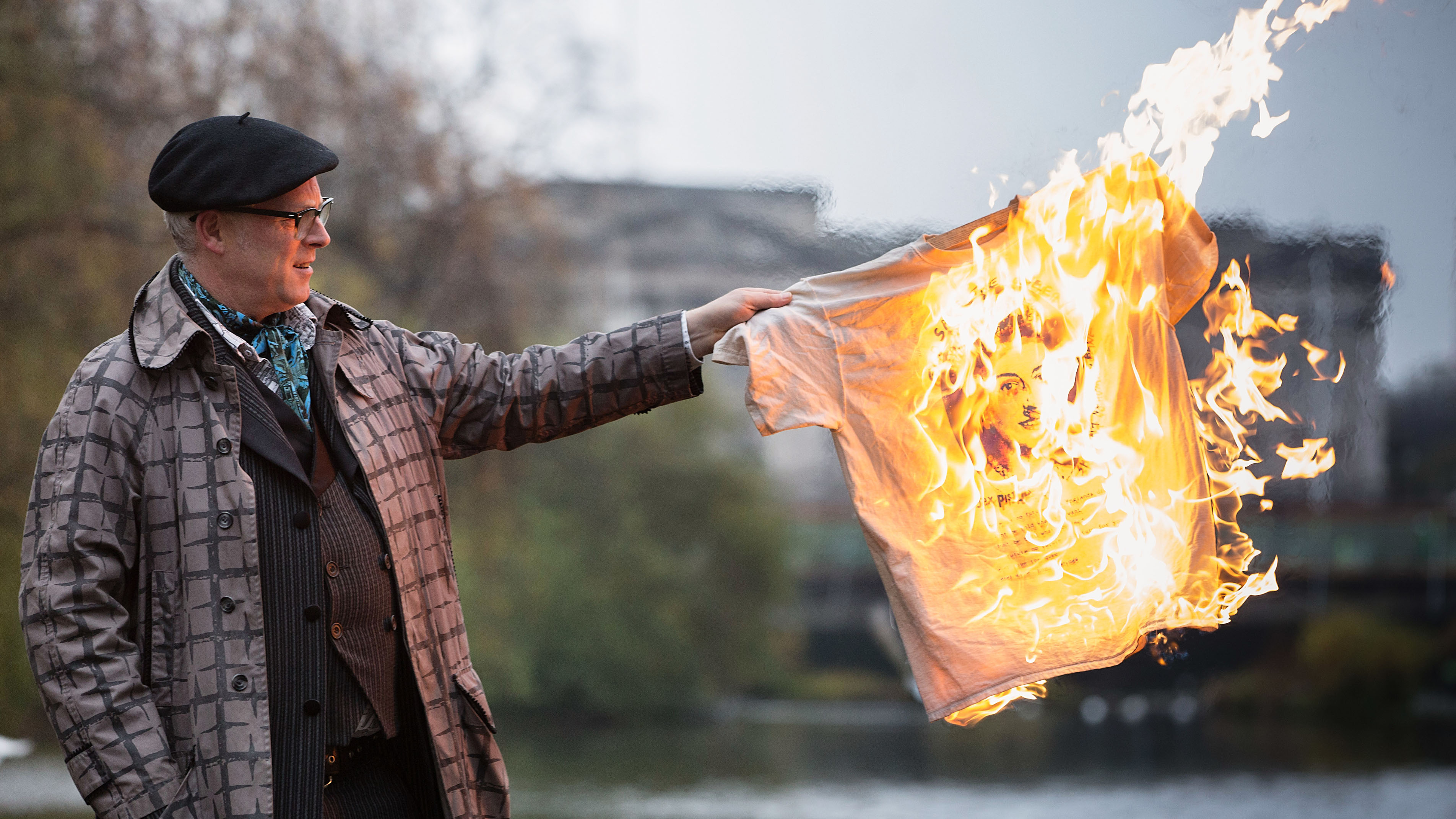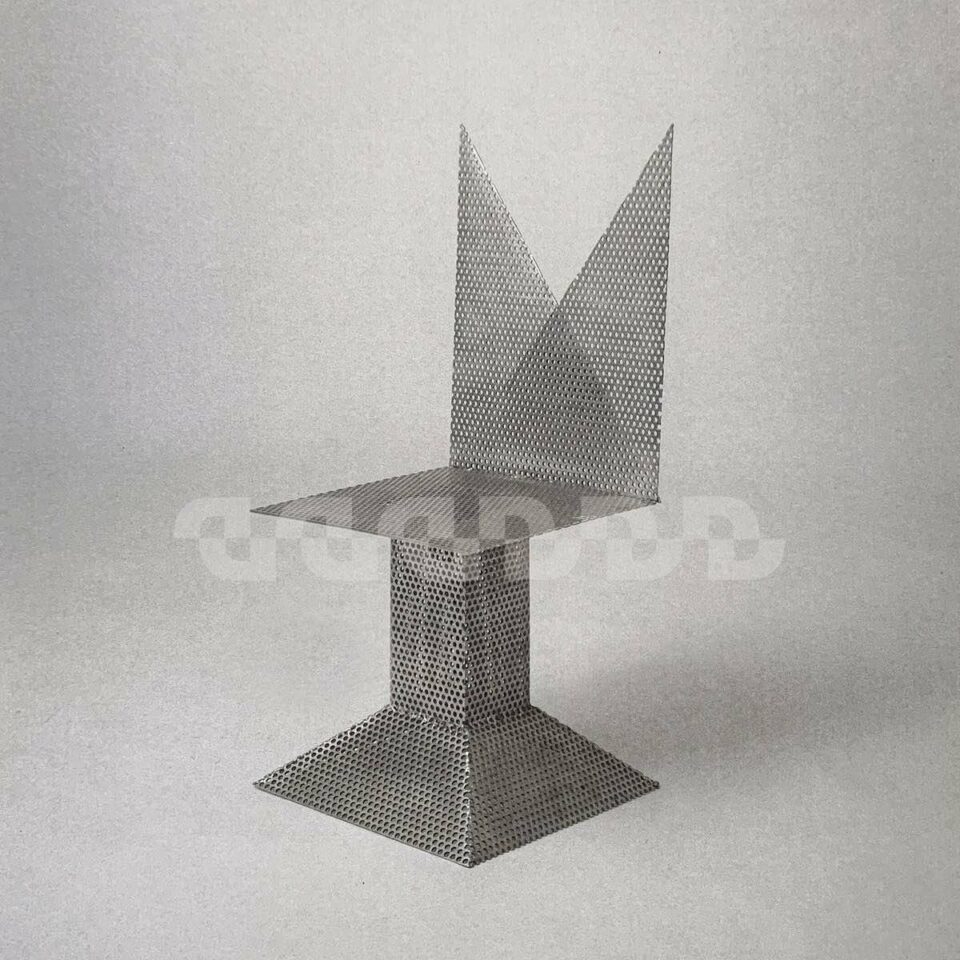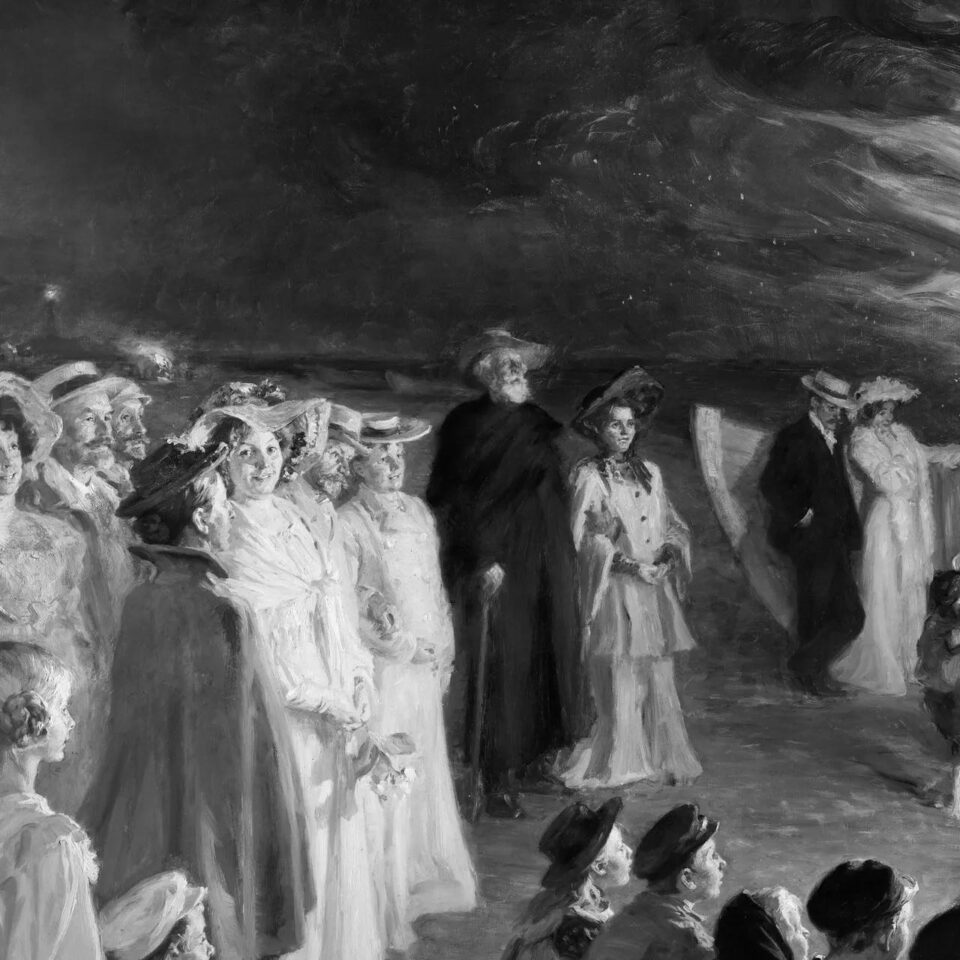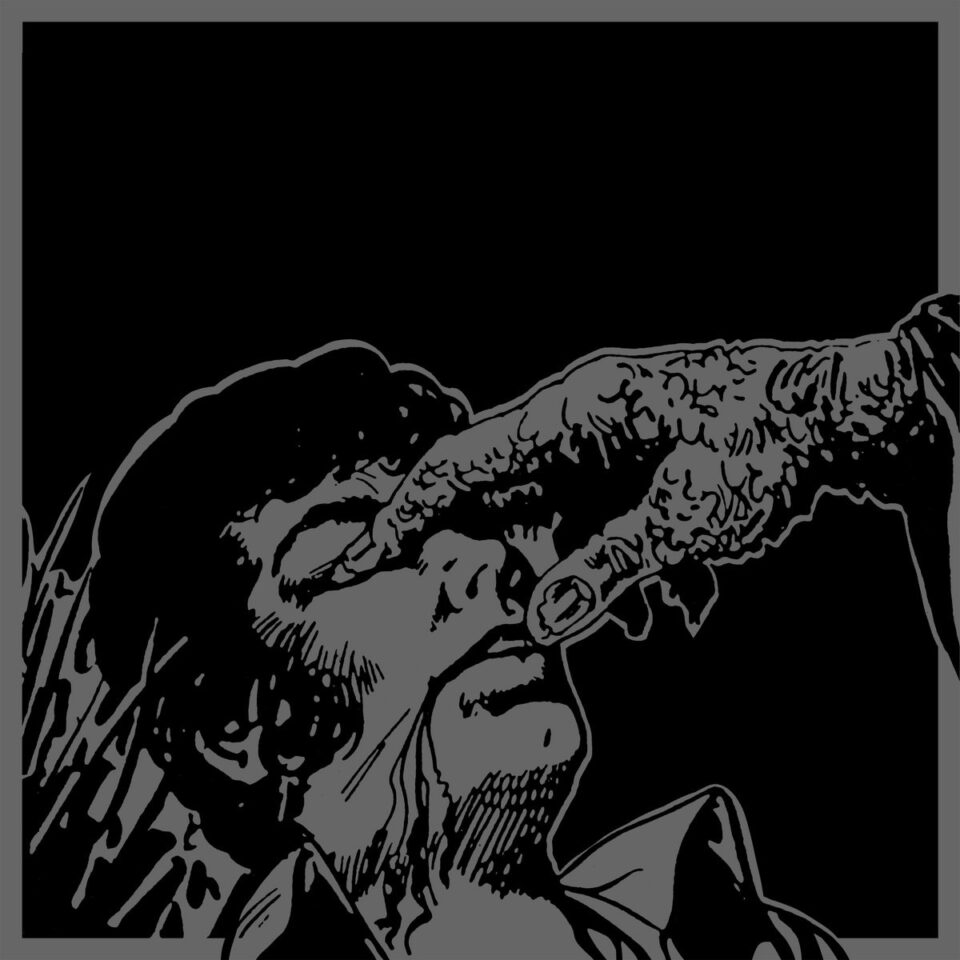In case you, like me, used the Thanksgiving holiday to sit in front of your TV and say “What the fuck?” while catching up on Westworld, you might have missed the all-smoke protest ignited by Agent Provocateur’s Joe Corré, son of Sex Pistols manager Malcom McLaren and designer Vivenne Westwood. In “celebration” of the fortieth anniversary of “Anarchy in the UK,” Corré apparently set fire to £5 million of punk memorabilia outside of Buckingham Palace. Corré spoke with The Guardian ahead of the pyre-lighting, clarifying that his intent was a kind of purge. Punk, he claims, is a “McDonald’s brand … owned by the state, establishment, and corporations.”
Of the “Anarchy” anniversary, Corré also said, “I think this is the right opportunity to say: you know what? Punk is dead. Stop conning a younger generation that it somehow has any currency to deal with the issues that they face or has any currency to create the way out of the issues that they face.”
Which is maybe a fair point. But there are a few things wrong with Corré’s claim and protest, not the least of which is the selfishness inherent in it: John Lydon—who certainly has a greater claim to punk’s history than pretty much anyone else still alive—called Corré a “selfish fucking lingerie expert” who should’ve instead sold the merch for charity.
But both Corré’s point and his protest are woefully outmoded. The death of punk rock is hardly news—historian Jon Savage points to the splintering of the genre into social realism and artsy post-punk as the end of the idea, and that happened all the way back in 1978. Even the youth movement that depends on the aesthetic markers that Corré was so intent on destroying—itself distinct from the musical genre of punk—was capitalized before the Sex Pistols even made it across the Atlantic, never mind the mass commercialization that would follow and peter out and return several times in the ensuing forty years. That was the idea floated by Corré’s parents from the beginning, after all; from its origins, the McLaren brand of punk was a capitalist movement in pinned-together anarchist clothing.
All of which is painfully old news. That Corré seems unaware of it—who still feels the need to announce the death of the Pistols’ brand of commercialized punk dead in 2016?—speaks to the myopia of both Corré and the paradoxically self-sustaining idea of punk’s destructive popular legacy. “Any idiot can destroy,” notes Tim Sommer, and he’s right. What made (and continues to make) punk a compelling social movement and guiding philosophy, and what allowed it to immediately exceed the boundaries put upon it by McLaren that Corré has apparently inherited, was the idea of replacement. It’s never enough to simply negate; there is nothing revolutionary about pointing out the void. If we’ve learned anything in 2016—and maybe we haven’t after all—it’s that destruction without reconstruction leads to smoking craters and little else.
From its origins, the McLaren brand of punk was a capitalist movement in pinned-together anarchist clothing.
The truly revolutionary idea that punk helped to spread in the world is not the burned-out conservative rocker aesthetic that McLaren, Lydon, and the rest created so compellingly. What made and continues to make what punk amplified relevant today are the deeply American notions of self-reliance, individuality, the exploration of Whitmanesque personal multitudes. “Punk is whatever we made it to be,” as the Minutemen’s D. Boon famously put it. All of the rejection of inherited ideas—both aesthetic and theoretical—that punk foregrounded were only the first step. You set fire to a forest to promote new growth.
Destroying a bunch of sweat-rimed t-shirts and obscure 7”s, then, is a profoundly stupid exercise in missing the point. Are those artifacts important to the history of rock and roll? Yes, undoubtedly. But they don’t hold any significance to punk beyond themselves. They’re aesthetic markers, the symbolic significance of which Corré’s protest actually upholds, insofar as it assumes that the “dead” idea of punk lives in the visual and sonic imagery of the Sex Pistols and London in 1976. By destroying it, Corré cops to the historical genre’s commercial legacy (it wouldn’t be much of a protest if this stuff weren’t worth anything) and he actually increases the commercial viability of other historical punk memorabilia by creating scarcity.
But if he thinks that this is the action the world needs to finally get back to the roots of punk rock as a youth movement—and I’m not convinced that Corré is interested in anything other than the spectacle of setting fire to money—then he’s only ever judged punk by the terms he claims to detest: as a commercial force and a set of visual signifiers. And that’s the thing about signifiers; they’re only good when they still accurately represent the signified. If anyone’s conning the kids about the vitality of punk rock and its outmoded ideas, it’s the man with the gas can and the matches. FL









